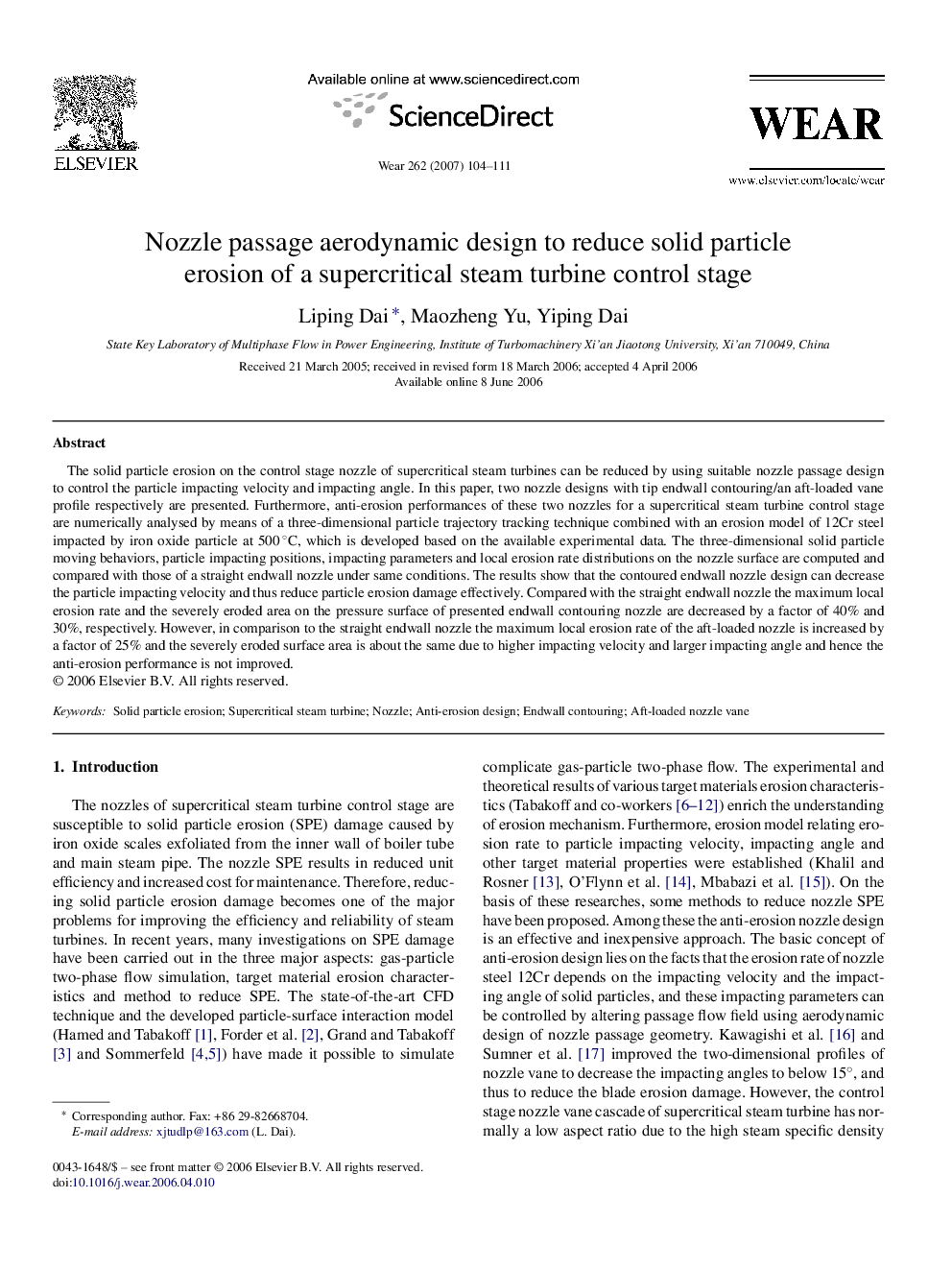| Article ID | Journal | Published Year | Pages | File Type |
|---|---|---|---|---|
| 619487 | Wear | 2007 | 8 Pages |
The solid particle erosion on the control stage nozzle of supercritical steam turbines can be reduced by using suitable nozzle passage design to control the particle impacting velocity and impacting angle. In this paper, two nozzle designs with tip endwall contouring/an aft-loaded vane profile respectively are presented. Furthermore, anti-erosion performances of these two nozzles for a supercritical steam turbine control stage are numerically analysed by means of a three-dimensional particle trajectory tracking technique combined with an erosion model of 12Cr steel impacted by iron oxide particle at 500 °C, which is developed based on the available experimental data. The three-dimensional solid particle moving behaviors, particle impacting positions, impacting parameters and local erosion rate distributions on the nozzle surface are computed and compared with those of a straight endwall nozzle under same conditions. The results show that the contoured endwall nozzle design can decrease the particle impacting velocity and thus reduce particle erosion damage effectively. Compared with the straight endwall nozzle the maximum local erosion rate and the severely eroded area on the pressure surface of presented endwall contouring nozzle are decreased by a factor of 40% and 30%, respectively. However, in comparison to the straight endwall nozzle the maximum local erosion rate of the aft-loaded nozzle is increased by a factor of 25% and the severely eroded surface area is about the same due to higher impacting velocity and larger impacting angle and hence the anti-erosion performance is not improved.
